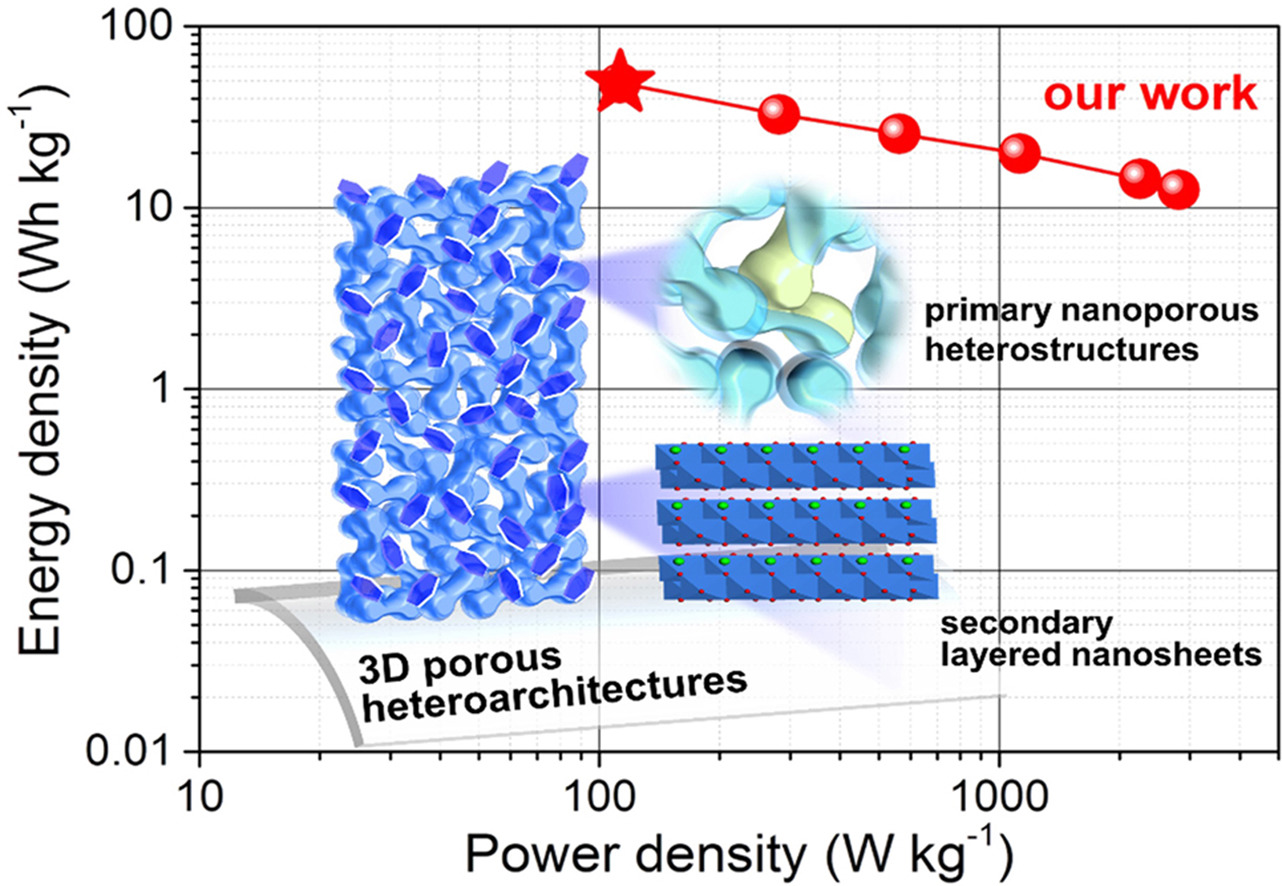
John Hong et al., Nano Energy, 39, 337, 2017
Abstract
Designing and tailoring the assembly of complex ternary transition metal oxide (TTMO) structures are a key step in the pursuit of high performance pseudo-capacitive materials for the development of next-generation energy storage devices. Here, we present uniquely assembled 3D porous heterostructures with hierarchically-coordinated TTMOs, comprising the multiply interconnected primary nanoporous frameworks of ZnCo2O4/NiMoO4 core-shell structures and the secondary protruding structures of NiMoO4 layered nanosheets. By benefiting from the combination of hierarchically cooperative two TTMOs, the developed 3D ZnCo2O4/NiMoO4heterostructures with their stable, porous, and conductive features exhibit robust pseudo-capacitive performance with high capacitances of 6.07 F cm–2 and 1480.48 F g–1 at 2 mA cm–2 as well as an excellent cycling stability of 90.6% over 15,000 cycles. Moreover, an asymmetric supercapacitor device can deliver a high energy density of 48.6 Wh kg–1 and a power density of 2820 W kg–1. The superior pseudo-capacitive energy storage characteristics are strongly attributed to the interconnected 3D nanoporous network architectures of the TTMOs along with the secondary layered nanosheets that provide 1) the enlarged surface area with the high conductivity, 2) the facile and multi-access ion paths, and 3) the favorable structural stability. Combined, these results highlight the importance of novel nanostructure design in maximizing the pseudo-capacitive performance and provide a viable way to develop new electrode materials.